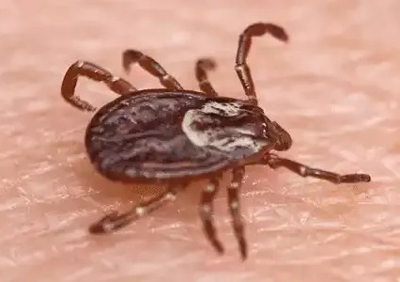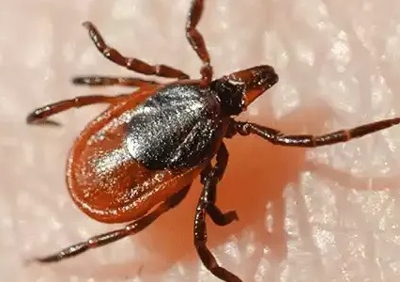
Learn About Ticks
Frequently Asked Questions
-
What are the most common types of ticks?
Ticks are a type of external parasite that feed on the blood of wildlife, domestic animals, and people. Ticks are a potentially very dangerous pest because they pose serious health concerns as they have the ability to carry and transmit disease a wide variety of diseases to people and pets. The three most common species of ticks found living in Florida include the American dog tick, blacklegged tick (deer tick), and brown dog tick.
-
Do ticks bite?
Yes, ticks bite in order to pierce the skin of their host so that they can feed on their blood. Most tick bites are painless and result in redness and swelling. Tick bites may develop into sores on the skin as well.
Ticks use their specialized mouthparts to grasp the skin, pierce it, and insert a feeding tube to suck out the blood. They secrete a small amount of saliva with anesthetic properties in it during the feeding process in order to make the process painless.
-
How are ticks introduced?
Ticks are often introduced by rodents and other wildlife as they wander through. They’ll seek out tall grass, thick vegetation, and wooded areas where they’ll wait for a new host to wander by.
Another way ticks arrive is on people and pets. If you spend time in areas where ticks are likely to be (i.e. hiking trails and woods), you run the risk of bringing them home.
-
How do I prevent ticks?
In order to make your home, your family, and your pets less attractive to ticks, we recommend the following tick prevention tips:
- Trim back wooded areas back away from your property line; place a stone barrier between any wooded areas and your property’s lawn.
- Keep your lawn trimmed short; trim back any overgrown shrubs or bushes found on your property.
- Remove bird feeders from your property that could attract wild animals to it.
- Under the guidance of your pet’s veterinarian make sure that they are placed a year-round tick prevention medication.
- Wear bug spray to repel ticks when you will be spending time outside.
- When you are hiking or biking, make sure to stick to the path and avoid traveling through tall grasses and dense vegetation.
Despite your best efforts, you may not be able to avoid ticks when you’re outside. With that in mind, you should always check yourself, family members and pets for ticks before coming inside.

-
 American Dog TicksBefore having a blood meal American dog ticks are brownish-tan in color and have marbled white or yellow markings; after having a blood meal they turn a grayish-blue or olive green color. Their body is oval in shape but when full of blood they increase in size and become round in shape.
American Dog TicksBefore having a blood meal American dog ticks are brownish-tan in color and have marbled white or yellow markings; after having a blood meal they turn a grayish-blue or olive green color. Their body is oval in shape but when full of blood they increase in size and become round in shape. -
 Blacklegged Ticks (Deer Ticks)
Blacklegged Ticks (Deer Ticks)Blacklegged ticks are a very small species of tick, they are a dark orange color and have distinctively darker, almost black colored legs. Before a meal, the adults are only about 1/8th of an inch in length, and after a meal, they become engorged and grow larger.
Ticks are a type of external parasite that feed on the blood of wildlife, domestic animals, and people. Ticks are a potentially very dangerous pest because they pose serious health concerns as they have the ability to carry and transmit disease a wide variety of diseases to people and pets. The three most common species of ticks found living in Florida include the American dog tick, blacklegged tick (deer tick), and brown dog tick.

Pests Beware. We Care!
Trust Keller's Pest Control For Reliable Service With Integrity
-
No Obligation Estimates
-
Family-Owned & Operated
-
29+ Years in Business
-
Knowledgeable Technicians
-
Customer Top-Rated
-
No Contracts


-
"A+ Communication"I've been using Keller's for over three years now and they've been great. I've had some bug problems and they have been very responsive at fixing them even if it meant showing up out of cycle to handle. Communication is key and they get an A+.- Jeff I.
-
"Knowledgable & Efficient"The technician was so knowledgeable about my bed bug issue. They came in with a heat machine and eliminated the bug quickly and efficiently. I was able to get my rental back in action the next day! Great company.- Christopher W.
-
"Outlined Treatment Plan"The technician was great and clearly explained what issues we were having in our home. They outlined the treatment plan to address those issues and the time frame. Very friendly and we look forward to a great relationship as their happy customer.- Kevin A.
-
"4+ Year Customer"We have used them for over 4 years. Our technician is very knowledgeable and professional. We are gone from the property sometimes as long 4 months and never have any pest issues. We highly recommend Keller’s Pest Control.- Bill B.
-
"They Explained Everything"Keller's was very quick to respond to my call and came to the house at my convenience. They did such a great job at explaining things and I went with the quarterly service plan. Very reasonable pricing and gave us piece of mind.- Ron Q.
-
"Bed Bugs Gone"Keller’s Pest Control is by far the best service we’ve ever had! Patrick Keller is professional, thorough & amiable. The bugs have been gone ever since they first serviced us! We will continue our service can’t recommend them enough.- Sara M.
-
"Longtime Customer"We have been working with Keller’s for a long time and could not be happier with their service and expertise. They are responsive and honest. We appreciate the technicians and the office team. Thank you, Keller’s Pest Control!- Christine S.
-
"10+ Year Customer"I’ve used Keller’s for pest control at my house for more than 10 years. They have always provided excellent, speedy, and complete service. It's pleasure to do business with them.- Bob W.
-
"Exceptional Company"Keller's Pest Control is exceptional in every way! Their team is knowledgeable, professional, and genuinely dedicated to ensuring a pest-free home. From quickly addressing serious issues to providing regular, reliable maintenance, they’ve exceeded.- Aleks S.

Go With the Team You Trust.
See Our Proud Affiliations, Certifications & Awards

-
 Pest Library
Pest Library -
 Read Our Blog
Read Our Blog -
 Save on Service
Save on Service









